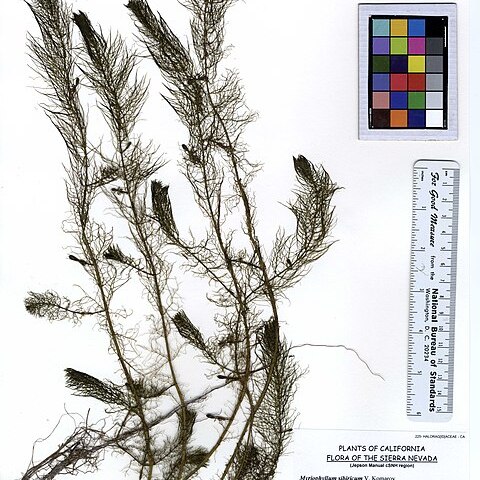Plants monoecious. Stem loosely erect in water, often whitish, few branched above, base characteristically curved or U-shaped on young plants; internodes distinct, ca. 1 cm. Submerged leaves 4-or 5-whorled, pectinate, ovate to oblong in outline; segments in 5-12 pairs, filiform, 1-5 cm. Inflorescence a terminal spike of 2-4-whorled flowers, mostly 4-10 cm; bracts shorter than or rarely equaling fruits. Male flowers: bracteoles oblong-spatulate or ovate-oblong, margin entire; petals pinkish; stamens 8. Female flowers: bracteoles mostly serrate or somewhat pectinate-toothed at margin; perianth absent or sepals vestigial. Fruit 4-loculed, globose, ca. 2 mm; mericarps abaxially tuberculate or aculeate. Fl. and fr. Apr-Sep.


